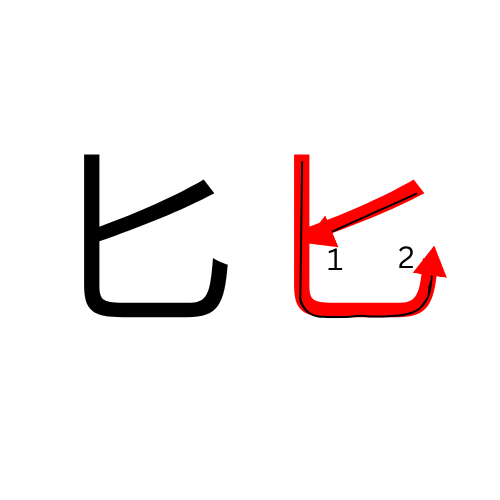Lesson 1.5: Stroke Order
We’re almost ready to start forming real Chinese sentences! Right before we do, it’s important that you be aware that each character has an ideal order in which its strokes (lines) should be written. Knowing a character’s stroke order will help you write it as quickly and naturally as possible, and it will also allow you to use certain stroke-based typing systems. Errors in stroke order aren’t critical at all, though, and you could get by without knowing any stroke orders—though we don’t recommend it.
You don’t have to memorize the order for each character; instead, there are a few patterns that you can use to correctly write any character.
First, remember from Lesson 1.1 that most characters are just combinations of common shapes called components. If you know the stroke order for a component, then you know how to write it in any character it makes up.





You can see a more complete list of stroke orders for components at the bottom of this page.
Once you know the stroke orders of the components, there are some other patterns that can help you write them in the write order. For example, write components from left to right and top to bottom.



Write horizontal lines before vertical lines.


When one component surrounds another, it’s conventional to write all of the outside character except the bottom, then whatever is inside it, then the bottom of the outside character.

The same basic principle applies when horizontal and vertical lines cross each other: write all the horizontal lines except the bottom one, then the vertical line, then the bottom horizontal line.


Now we’ll provide a list of the stroke orders for all of the most common components, as promised. A word of advice when learning them, though: don’t try to systematically memorize them all. That would frankly be more trouble than it’s worth since, compared to the other Chinese concepts you’ll learn, stroke order is one of the less important ones. Instead, we recommend using these for laid-back handwriting practice: try sitting down with a piece of paper and a pen and just copying down these shapes several times over several days. That way, you’ll get used to the basic shapes of Chinese in a much more relaxed way.
































































And with that, you’ve learned all of the foundations of the Chinese language! Now that you know about the script, tools, and sounds around which Chinese is built, you’re ready to start learning actual Chinese grammar, which will allow you to speak and understand complete ideas.